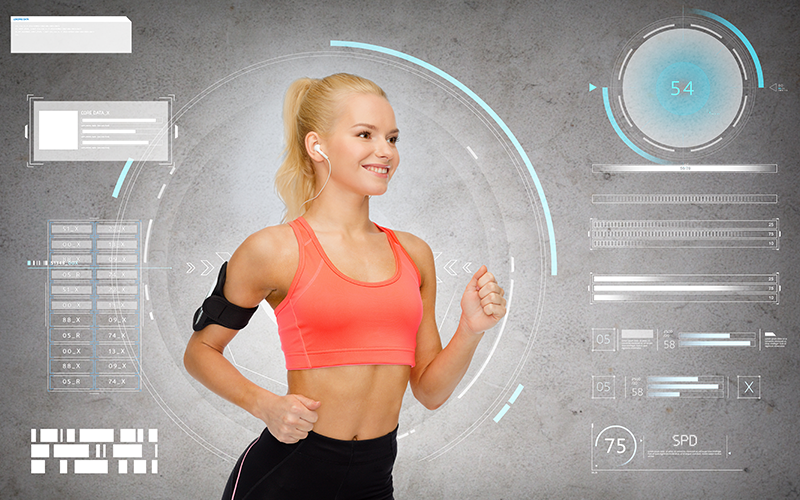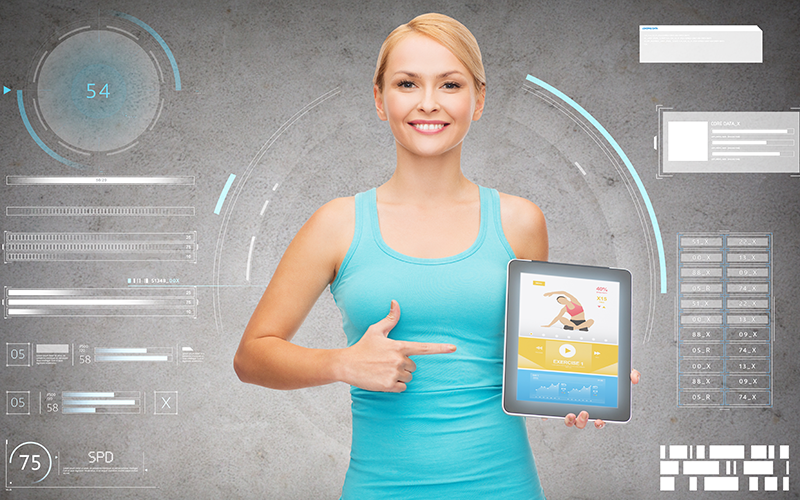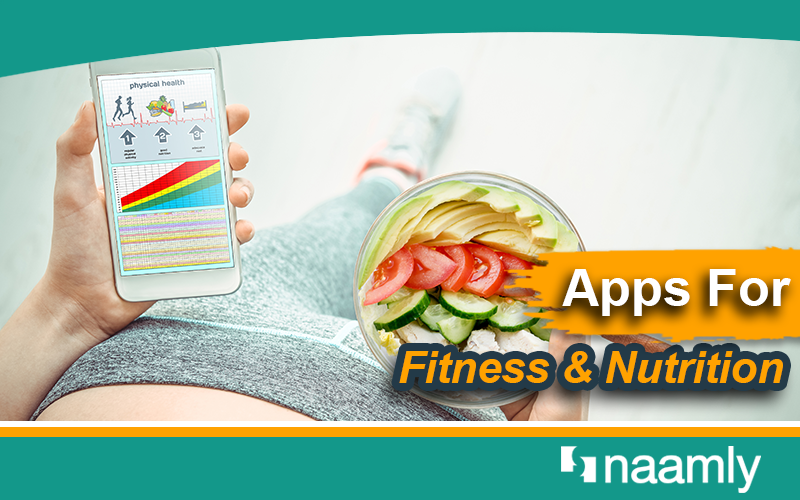As a gym owner or trainer, you’re already doing a lot to help your clients get fit and healthy. But we all know that exercise is just one part of the equation.
If your clients want to achieve and maintain their fitness goals, they need to develop healthy eating habits, too. And that’s where things can get tricky.
Let’s face it—there’s a lot of confusing information out there about diets, weight loss, and nutrition in general. Your clients might not fully understand how what they eat affects their workouts, their energy levels, and their overall quality of life. But that’s where you come in!
You don’t have to be a nutritionist to help guide your clients toward better eating habits. With the right fitness and nutrition apps, you can set them up for success, keep them accountable, and help them stay on track with their goals.

Remember the old saying: “Fit bodies aren’t made in the gym—they’re made in the kitchen.” By using fitness and nutrition apps, you’re giving your clients a smart, fun, and efficient way to track what they eat, stay accountable, and reach their fitness goals.
And when they see results, they’ll keep coming back to your gym, building loyalty and long-term business for you.
Why Nutrition Tracking Matters
Before we dive into how to get your clients set up with fitness and nutrition apps, let’s talk about why tracking their food intake is so important. Here are some of the biggest benefits:
- Accountability: When clients can see their progress in real time, they’re more likely to stick to their nutrition plans. It’s like having a built-in coach that’s always there to remind them of their goals.
- Precision: These apps often have extensive food databases, making it easy for your clients to track calories, macronutrients (like carbs, protein, and fats), and even micronutrients (like vitamins and minerals).
- Behavioral Insights: Tracking food intake helps your clients (and you) understand their eating habits better. You can identify patterns—like late-night snacking or skipping meals—that might be holding them back.
- Motivation: Seeing progress, even in the form of data, can be incredibly motivating. When clients know their hard work is paying off, they’re more likely to stay committed to their fitness journey.

Choosing the Right Nutrition App
Not all fitness and nutrition apps are created equal, so it’s important to pick one that suits your clients’ needs and your coaching style. Here are a few things to consider:
- User-Friendliness: Fitness and nutrition apps should be easy to navigate. If it’s too complicated, your clients might not use it consistently.
- Comprehensive Database: A good app should have an extensive food database, including common foods, branded items, and even restaurant meals. The easier it is to log food, the better!
- Customization: Look for apps that allow for personalized goals based on individual dietary needs, fitness goals, and preferences. Everyone’s different, and the app should reflect that.
- Trainer Access: Some apps let trainers monitor their clients’ food logs and provide feedback directly through the app. This feature can be a game-changer in terms of keeping your clients on track.
Read ‘Role Of Tracking Nutrition In Fitness’
Here are some popular nutrition apps that hit these marks:
- MyFitnessPal: Super popular and comprehensive, this app offers a massive food database and easy tracking of calories and macros. Plus, trainers can connect with clients to see their logs.
- Lose It!: Known for its simplicity, this app focuses on calorie tracking and lets trainers create challenges and goals for their clients.
- Cronometer: Ideal for clients who want detailed nutritional information, this app goes beyond just macros and tracks micronutrients too.
- Nutritionix Track: A straightforward app that’s easy to use and allows for trainer-client integration.

Setting Up Fitness and Nutrition Apps
Once you’ve chosen the right fitness and nutrition apps for your gym, it’s time to get your clients on board. Here’s how to effectively set them up and ensure they’re using the app to its full potential:
1. Introduction Session
Start by introducing the app during a consultation, a special workshop, or even in your email newsletter. Explain how it works, the benefits of using it, and how it fits into their overall fitness plan.
Key Points to Cover:
App Download and Account Setup: Walk your clients through downloading the app, setting up their accounts, and adjusting initial settings (like units of measurement and daily calorie goals).
Navigating the Interface: Show them how to log food, use the barcode scanner, and explore the food database. Make sure they feel comfortable using the app on their own.
Understanding Macros: Give them a quick lesson on macronutrients (carbs, protein, and fats) and show them how to track these using the app.
2. Creating Custom Nutrition Plans
Work with your clients to create personalized nutrition plans within the app. These should align with their fitness goals-whether they’re aiming for weight loss, muscle gain, or maintenance.
Steps to Follow:
Set Goals: Help your clients set realistic and achievable calorie and macro goals based on their fitness objectives.
Meal Planning: Teach them how to log meals in advance, which can make meal prep easier and help them stay on track.
Track Progress: Show clients how to monitor their progress over time and adjust their goals as needed.
3. Ongoing Support and Check-Ins
Consistency is key, so offer regular check-ins to help your clients stay on track. These can be in-person or virtual meetings where you review their food logs, discuss any challenges, and make adjustments to their nutrition plans.
Strategies for Support:
Weekly or Bi-weekly Check-ins: Schedule regular check-ins to review logs and track progress. This is a great time to offer encouragement and make any necessary tweaks.
Feedback through the App: If the app allows, provide feedback directly through it. This can be a quick and convenient way to stay connected with your clients.
Group Challenges: Create group challenges within the app, like a “7-day clean eating challenge” or a “macro-tracking contest,” to build community and keep your clients motivated.
4. Education and Resources
The more your clients know about nutrition, the better equipped they’ll be to make smart choices. Use the app to provide ongoing education on topics like meal timing, nutrient density, and the importance of hydration.
Educational Methods:
Workshops and Seminars: Host regular workshops on nutrition topics. You can cover everything from “Meal Prep 101” to “Understanding Macronutrients.”
Weekly Tips:
Send out weekly tips or articles via email or through the app’s messaging feature. This keeps your clients informed and engaged.
Recipe Sharing:
Share healthy recipes that fit their macros. This makes it easier for clients to plan meals they’ll actually enjoy.

Leveraging App Data for Better Coaching
One of the biggest benefits of using fitness and nutrition apps is the data they provide. As a trainer, you can use this data to offer more personalized and effective coaching.
1. Analyzing Patterns
Look at the data to identify patterns in your clients’ eating habits. Are they consistently under-eating or over-eating? Are they struggling to get enough protein? Understanding these patterns allows you to tailor your advice and help clients overcome specific challenges.
2. Adjusting Plans
As your clients progress, their nutritional needs may change. Use the data from the app to make informed adjustments to their plans. For example, if a client’s weight loss has plateaued, you might need to tweak their calorie intake or adjust their macro ratios.
3. Enhanced Accountability
When clients know you’re monitoring their progress, they’re more likely to stay accountable. Regularly review their logs and offer feedback to keep them on track and motivated.
Conclusion
Integrating fitness and nutrition apps into your gym’s offerings is a smart way to boost client results and satisfaction. By helping your clients track their nutrition, you’re giving them the tools they need to succeed.
And when they see results, they’ll keep coming back to your gym, knowing it’s the place where they can truly achieve their goals.

So, take advantage of these powerful tools, set your clients up for success, and watch as your gym becomes known as the go-to spot for real results.And when it comes to managing your gym, you don’t have to go it alone either. With innovative fitness software, you can easily manage your prospects, clients, and team. Ready to learn more? Click here to see how Naamly’s powerful communication tools can simplify your gym management.

